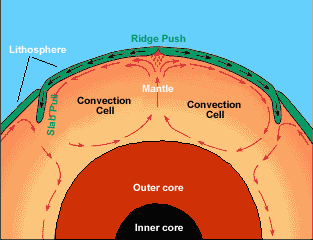Can Man Reach Earth's Mantle?

As they are planing to reach the Earth's Mantle by 2020. The angry volcano monsters that live in the Earth's mantle and cause volcanoes to explode may not be able to remain hidden for much longer.

Never heard of the Angry Volcano Monster theory of plate tectonics you say? Well, it is one of the less accepted theories about the state of affairs below the Earth's outer crust (it's mostly just believed by me). But the truth of the matter is no one is exactly sure what the inner workings of the planet are like. Despite all our technological advances, we have yet to directly inflict more than a geologic flesh would in the Earth's surface.
But this may soon change.

First, a primer on the mantle. The Earth's mantle is a nearly 2,000 mile section between the crust and outer core. It is mostly rocky, but becomes gooier as you descend towards the core. The mantle makes up the vast majority (nearly 85%) of the Earth's volume and has a unique chemical makeup that is completely distinct from the solid crust.

Volcanic eruptions do offer a glimpse into the geologic underworld, but the samples that plop out have already been altered on their way to the surface. Direct samples of the mantle would reveal volumes about the origins and history of the Earth. Studying the mantle could also provide insight into various forces of plate tectonics that create earthquakes, tsunamis, and volcanic eruptions.

Starting next month, exploratory missions in the Pacific will begin boring further into oceanic crust than anyone has before. According to one of the team leaders UK Geologist Damon Teagle, advances in offshore drilling technology will allow this expedition to succeed where past ones have failed.
The best place to drill is in the mid-ocean because this is where the crust is the thinnest. At some points in the mid-ocean, the crust is only 2.5 miles thick—still more than twice the distance of the deepest offshore drills, which have only reached to 1.2 miles into the ground.

Geologist have dug deeper holes from dry land, but drilling to these depths underwater presents a variety of hazards including possessing tools can withstand the freezing cold of the seafloor as well as extreme heat in the inner crust where temperatures may reach 570°F. Not to mention the unyielding pressures of miles of seawater overhead.

It will be an expensive and difficult endeavor, but the team is hopeful. Teagle claims the technology of deep sea drilling has come along way thanks to scientific drilling and because "the offshore petroleum industry has moved into deeper water" he explains to CBS news. "We also have a much better understanding of what we are trying to do—we have good understanding of how the ocean crust is formed and the difference between the crust and the mantle."
In addition to geologic measurements, scientists hope to take note of how far down signs of extremophiles can be found. "Wherever we've looked, up to 120 °C [248 °F], we've seen evidence of microbial activity," Teagle commented to National Geographic. "We would certainly test that on the way to the mantle."
If there were any life that managed to adapt to the harsh conditions deep in the Earth's crust, scientists expect it to be on the microscopic scale, but notice how he didn't completely rule out the possibility of finding Angry Volcano Monsters.




Post a Comment